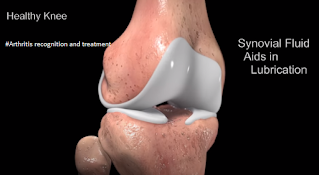Arthritis recognition and treatment:
Arthritis, a term encompassing various joint disorders causing inflammation and pain, requires careful recognition and tailored treatment approaches.
Here's an overview of recognizing arthritis and its treatment options:
Arthritis Recognition:
1. Symptoms:
Joint pain, stiffness, swelling, and reduced range of motion are common symptoms.
Symptoms can vary in intensity and may worsen over time.
2. Types:
Osteoarthritis: Caused by wear and tear of joint cartilage.
Rheumatoid Arthritis: An autoimmune disorder affecting joints and other organs.
Psoriatic Arthritis: Occurs in some individuals with psoriasis.
Ankylosing Spondylitis: Primarily affects the spine.
Gout: Caused by the buildup of uric acid crystals in joints.
3. Diagnosis:
Medical history, physical examination, blood tests, and imaging (X-rays, MRI) help diagnose arthritis type and severity.
Arthritis's Treatment:
1. Medications:
Pain Relievers: Nonsteroidal anti-inflammatory drugs (NSAIDs) like ibuprofen reduce pain and inflammation.
Disease-Modifying Antirheumatic Drugs (DMARDs): Slow progression in autoimmune arthritis.
Corticosteroids: Reduce inflammation and suppress the immune system.
Biologics: Target specific parts of the immune system to reduce inflammation.
Analgesics: Provide pain relief without affecting inflammation.
2. Physical Therapy:
Customized exercises improve joint function and reduce pain.
Occupational therapy helps manage daily tasks with joint protection techniques.
Fibromyalgia symptoms causes prevention
3. Lifestyle Modifications:
Weight Management: Maintaining a healthy weight reduces stress on joints.
Exercise: Low-impact activities like swimming and walking improve joint mobility and muscle strength.
Balanced Diet: Anti-inflammatory foods (omega-3 fatty acids, antioxidants) promote joint health.
Rest and Joint Protection: Adequate rest and avoiding repetitive stress protect joints.
4. Surgery:
Joint Replacement: Damaged joints (e.g., knees, hips) are replaced with artificial ones.
Arthroscopy: Minimally invasive procedure to repair damaged joints.
Synovectomy: Removal of inflamed synovium to reduce pain.
5. Complementary Therapies:
Acupuncture: Fine needles stimulate specific points to alleviate pain.
Massage: Eases muscle tension and improves joint flexibility.
Heat/Cold Therapy: Heat pads or ice packs provide temporary relief.
6. Psychological Support:
Chronic pain management programs and counseling help cope with emotional aspects of arthritis.
7. Regular Monitoring:
Regular check-ups with healthcare providers ensure timely adjustments in the treatment plan.
It's crucial for individuals experiencing arthritis symptoms to consult healthcare professionals for accurate diagnosis and personalized treatment plans. Early recognition and appropriate management enhance the quality of life for individuals living with arthritis.
